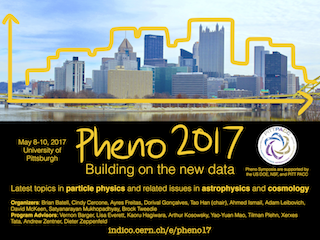Speaker
Description
We discuss a new alternative to the Weakly Interacting Massive Particle (WIMP) paradigm for dark matter. Rather than being determined by thermal freeze-out, the dark matter abundance in this scenario is set by dark matter decay, which is allowed for a limited amount of time just before the electroweak phase transition. More specifically, we consider fermionic singlet dark matter particles coupled weakly to a scalar mediator $S_3$ and to auxiliary dark sector fields, charged under the Standard Model gauge groups. Dark matter freezes out while still relativistic, so its abundance is initially very large. As the Universe cools down, the scalar mediator develops a vacuum expectation value (vev), which breaks the symmetry that stabilises dark matter. This allows dark matter to mix with charged fermions and decay. During this epoch, the dark matter abundance is reduced to give the value observed today. Later, the SM Higgs field also develops a vev, which feeds back into the $S_3$ potential and restores the dark sector symmetry. In this concrete model we show that this ``vev flip-flop'' scenario is phenomenologically successful in the most interesting regions of its parameter space and we comment on detection prospects.
